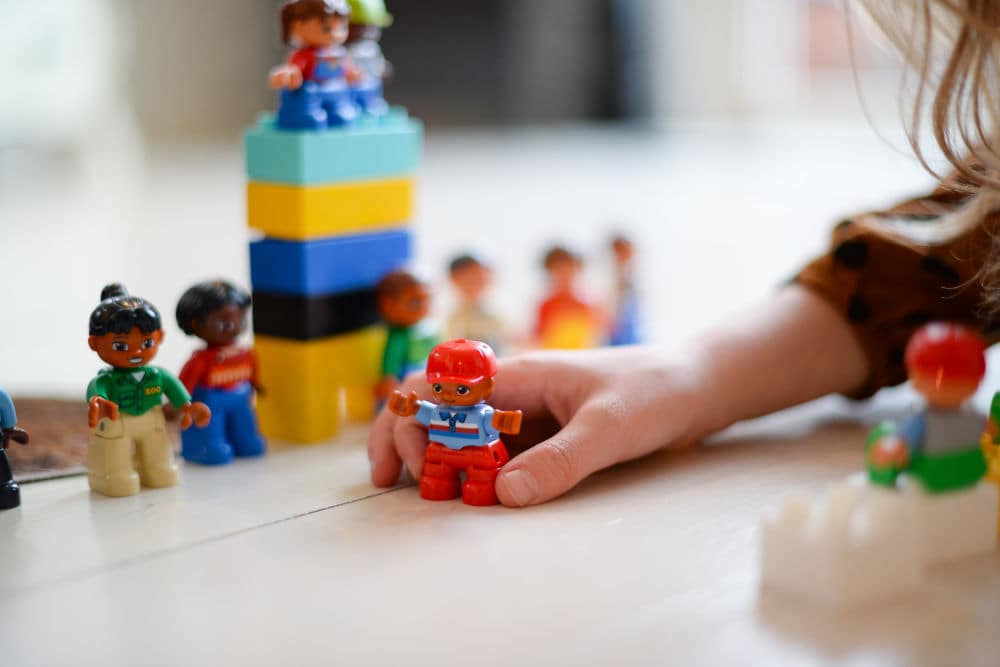For a parent, one of the most humbling and frustrating experiences is when your child backtalks or disrespects…
For a parent, one of the most humbling and frustrating experiences is when your child backtalks or disrespects you. This powerful approach is rooted in positive discipline and will calm the most disrespectful behaviour and stop backtalk.
There are times parenting feels like I am walking through an emotional minefield.
Just the other day, I wanted to take advantage of the mild spring weather and approached my daughter.
“Hey, you want to pack a picnic and head out to that big park by the creek?”
Usually, my daughter jumped at the chance to pack food for our family.
“No!” she snapped.
“Well, if you don’t want to go there, how about you pick the park? I’m sure the boys would like anywhere you choose.”
“No way. You want me to say no a hundred times?! Okay. No, no, no, no, no, no…”
Her backtalk pierced through me. Though I did my best to appear calm, my heart raced.
Why was she reacting like this? It was a nice day. I wanted to do something fun with her and it felt like she was being entitled and rude.
My knee-jerk reaction is to lecture and control. My inclination is to say something like,
“You know you shouldn’t speak to me like that. Why are you acting this way?! I want to do something nice. Why can’t you be polite and appreciative?!”
Or, in the past, I may have raised my voice and insisted, “You do NOT talk to me like that!”
But the more I learn about the best predictors for optimal child development, the more I’m realizing that discipline is best executed in a calm, deliberate manner.
Because my daughter was agitated, I took a step back to reflect…
Fighting backtalk, whether it’s going toe-to-toe with our children and yelling at them never to talk like that again or threatening to take away privileges, doesn’t promote emotional regulation and the best developmental outcomes.
Research on adolescent wellbeing shows that children whose parents favour a more authoritarian approach to discipline (e.g., “Do as I say right now”) have poorer emotional regulation and are more inclined to engage in destructive and risky behaviour (such as drug experimentation and sexual promiscuity). Whereas children with better emotional regulation are less likely to experience clinical depression or anxiety.
The most effective way of promoting emotional regulation is through co-regulation. This means that if my child shows interest or happiness, I can upregulate that emotion by building on her curiosity or joining in in her happiness (making the experience that much more joyful). In contrast, when my child is upset, overwhelmed or angry, I should down-regulate her emotions. So instead of meeting her intensity with my own intensity, research shows I should model calmness and be responsive to her needs in an appropriate manner. (What is appropriate depends on the parent-child relationship as well as other factors.)
So the first step to addressing backtalk (high energy response) was by staying calm (down-regulating her emotions). The next was to diffuse the situation.
Adults and children are communicating something through their behaviour during every moment in every day, even if they are not aware of it. A child’s problematic or inappropriate behaviour is a sign that he is upset and that something is not right.
– PBS.org
Viewing all behaviour as communication requires that I pause and reflect on the lead-up to the backtalk. What was my child doing? What has been going on? What has she been like lately? Has she eaten and slept well? Is she overwhelmed or hurt?
When I approached my daughter, she had Duplo, Shopkins and LOLs meticulously set out. But I wasn’t sure what had happened.
Related read: How to Discipline a Child: Why scientists say this is the best approach

I put myself in my daughter’s shoes. I know that when I yell at my loved ones, often it had very little to do with what was going on at that moment. There have been times, I have lost my cool because I’m worried about money, deadlines, and the well-being of my relationships.
My daughter’s reaction wasn’t an insult to my parenting or our relationship.
It was her white flag. Her backtalk was her not-so-constructive way of saying, “I don’t feel right.”
Now, just to be clear, understanding the behaviour isn’t approving of the behaviour. We would still need to address what went wrong. But first I needed to understand what was up.
I want to understand the source of her backtalk for two reasons.
First, I want to help her release her pent-up anger, worry, or sadness. And secondly, I want to stop backtalk from happening again. If I simply tell my daughter not to speak to me that way, I haven’t gotten to the root of the behaviour. And, just like a dandelion being mowed, the problem is sure to sprout again without proper treatment.
The question remained: how should I get to the bottom of what was bothering her?
There is a powerful technique for couples’ therapy that approaches conflict in a matter-of-fact way. Developed in the 1970s by Dr. Harville Hendrix and Dr. Helen LaKelly Hunt, imago therapy understands that, in order to have functional, happy, safe relationships, people need to be able to express their emotions and have those emotions understood without worrying about repercussions.
Because imago dialogue is meant in the context of an adult relationship, I adapted it. Not only has it stopped backtalk almost entirely, but I have also used this adaptation in the context of sibling rivalry and other heated contexts.
This will facilitate honest responses from the child and will help er calm down and eliminate distractions.
Starting with what the parent has observed can help.
For example, “I noticed you were angry when I suggested we go for a picnic. What’s going on?”
It may take some children some time to calm down, trust that they can speak their minds, or find the words to express what they feel.
For younger children, it can help to prompt them with yes or no questions. For instance, “You seemed mad when you yelled at me, is that right?”
For older children, reassurance or simply waiting for their response may help.
As the child starts talking, the parent’s only job is to allow the child to get everything off her chest and feel heard. To successfully do so, the parent must suspend the desire to interject his experience with the child.
My job isn’t to take a side, emotionally react or try and get a point across. It’s my job to hear her side of the story as wholly and completely as possible. This means that if my child answered, “I got mad because my brother is awful!” I need to avoid saying, “No he isn’t.”
Instead, it’s my job to depersonalize her words and react calmly to diffuse the situation. Furthermore, I want to keep the dialogue going so that she has the full opportunity to release all of her pent-up anger.
So instead I will paraphrase by saying, “Your brother is making you SO mad.”
It can help the conversation to ask, “Is there anything else?” and after paraphrasing, “Did I get that right?”

When I decided to use this technique, I anticipated it may be a long, drawn-out process. Instead, it only took a few minutes but the result was transformative.
Through the dialogue, I saw relief wipe the frustration off of my daughter’s face. She didn’t have to fight to prove her point. And, she didn’t have to worry about me coming down hard on her. To her surprise, she was able to tell me everything that had been bothering her that day and that week.
I found out two things. First, my daughter felt like every single time she sat down to play, her brother was in her personal space. Not only that, but she would tell him to leave her alone and he wouldn’t listen. Then, because I was tied up, I would say something vapid like, “Get along,” or “Work it out amongst yourselves.”
She felt like she couldn’t get breathing room and I wasn’t paying attention to her.
Then, I came to her and interrupted her during a moment her brother wasn’t in her space.
That’s when I suggested she stop doing something she had been trying desperately to do (play with Duplo and LOLs). On top of it, I suggested spending more time with the person who was bothering her the most (her brother).
Once we got to the bottom of the problem, I could parent appropriately. Had I simply told my daughter not to talk to me in a rude tone of voice, I would have compounded the problem.
Instead, we came up with a plan for the next time.
“You’re allowed to be frustrated,” I said. “But, you can’t talk to me that way. It’s rude and it hurts my feelings. Next time your brother gets in your space, how about we use a code word so I know to come over right away and help you?”
She beamed. “I’ll say unicorn. That’s one of my favourite words.”
It was settled and we both felt better.
Of all the parenting techniques I have used, this is definitely the most effective. While it may be tempting to shut down backtalk and not find out why it’s happening, it doesn’t solve the problem. In fact, it pushes the problem down almost guaranteeing that it will eventually overflow at a later time. By asking questions, paraphrasing, and empathizing, my children are taken out of a state of stress and into a state of relief. They then become receptive to my discipline. Also, this form of communication stops emotions from stewing under the surface and getting worse. In truth, imago dialogue is an effective technique for any tense or highly emotional situation as it gives peace of mind and clarity to the parent and child.
How to Discipline a Child: Gentle Parenting vs. Harsh Punishments
Responsive parenting is crucial for development. This is why.
How to Find Peace in the Heat of the Moment and Stop Yelling at Your Kids
These Research-Backed Strategies Will Make You a Happier Parent
It’s science: Attachment is the key to raising more emotionally stable children
Being a teenager is like standing on a bridge between childhood and adulthood. It’s exhilarating, confusing, lonely, and…
You know, growing up isn’t a cakewalk. We all face those bumps and hitches that shape us into…
Ever caught yourself nudging a rogue pea back into its lane, even though you’re decades past the kids’…